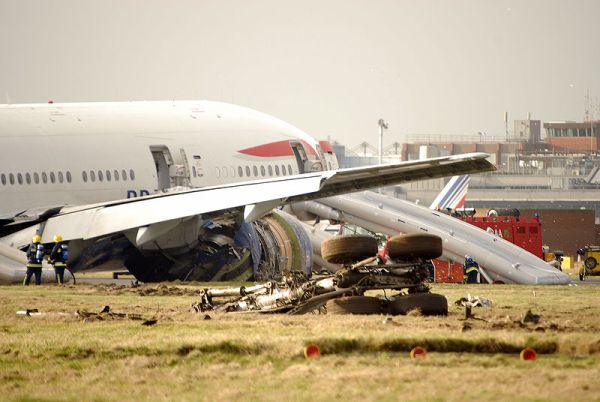
Tuesday’s very hard landing of a Cathay Pacific A330-300 at Hong Kong’s airport has two superficial similarities with the crash landing of a British Airways 777-200ER at London’s Heathrow airport on January 17, 2008.
They are Rolls-Royce engines and fuel starvation on final approach for a landing, at a time when engine thrust is often increased from near idle levels as the airliner, nose elevated continues to sink toward the chosen point of contact with the runway.

The Cathay Pacific flight, from Indonesia, made it onto the runway, bursting (or failing, as readers have correctly pointed out) some of its tyres from the forces of the impact and deceleration, with injuries to 8 passengers, while the BA038 flight from Beijing touched down hard short of the runway, causing injuries to 47 of the passengers and crew and breaking the gear and damaging the jet beyond repair.
There are some important reasons to be cautious but also mindful of the similarities between the accidents. After lengthy inquiries, the BA038 crash was blamed on ice crystals in the fuel clogging the fuel/oil heat exchanger in each of the Rolls-Royce Trent 800 engines, all of which are now being compulsorily modified to a 2011 deadline.
Those inquiries specifically exonerated the 777 design from fault, and also other similar Ross-Royce engines used on other large jets, including the Trent 700 engines used by many airlines (but not Qantas or Jetstar) on their A330 jets.
Nevertheless, it is inevitable that the inquiry now under way will look for any evidence that the fuel supply to the Cathay Pacific jet’s engine was disrupted by ice, just as it will look for entirely different causes, such as something that may have gone wrong in the control or fuel management systems.
The same puzzle will however exist for this inquiry as it did for the BA038 investigators. How is it that the fool-proof multiply redundant and independent systems and mechanics of a modern twin engined wide-body jet could permit serious problems to arise at the same time in each engine?
That question focused attention on whatever was common to both engines at that time, which was fuel flow, and also on the search for a common factor external to design, and that was contamination or blockage.
Has Cathay Pacific been the victim of a similar problem to that which caught out British Airways, or is this something entirely different? It could take considerable time to find out.








Crikey is committed to hosting lively discussions. Help us keep the conversation useful, interesting and welcoming. We aim to publish comments quickly in the interest of promoting robust conversation, but we’re a small team and we deploy filters to protect against legal risk. Occasionally your comment may be held up while we review, but we’re working as fast as we can to keep the conversation rolling.
The Crikey comment section is members-only content. Please subscribe to leave a comment.
The Crikey comment section is members-only content. Please login to leave a comment.